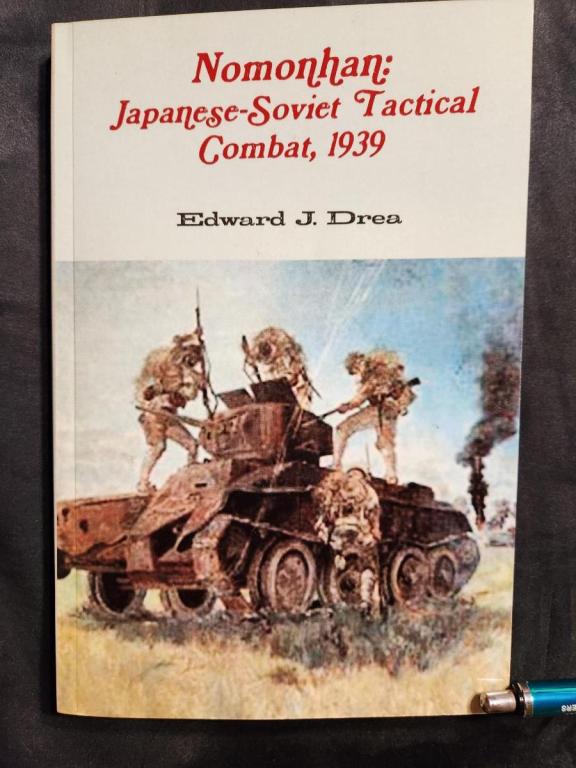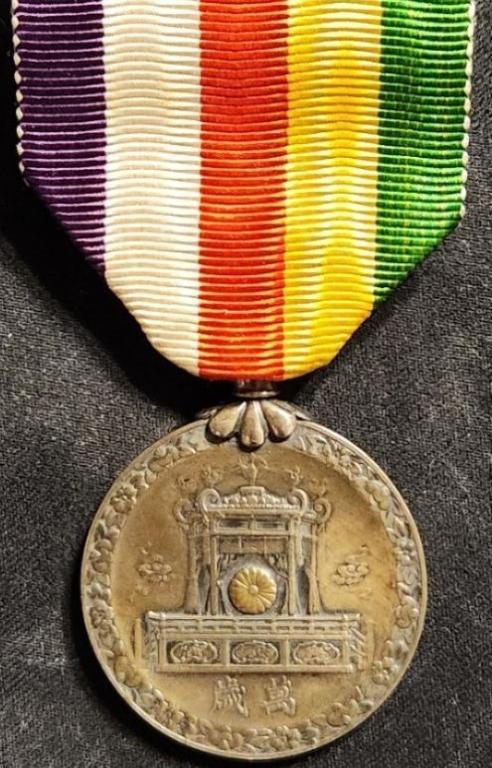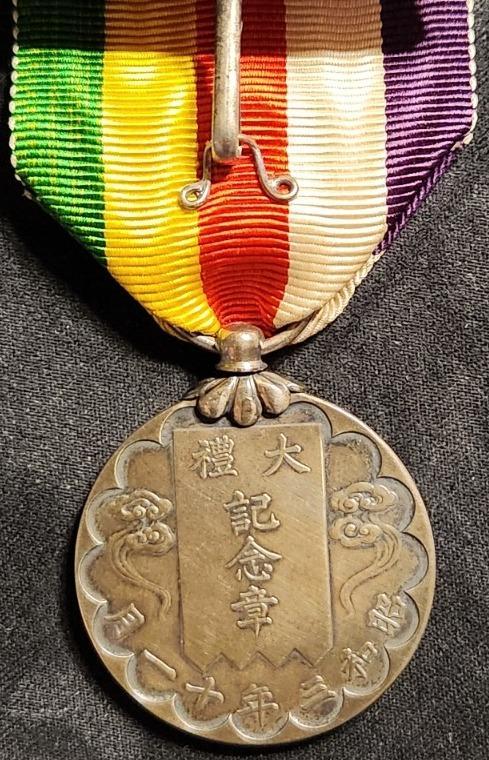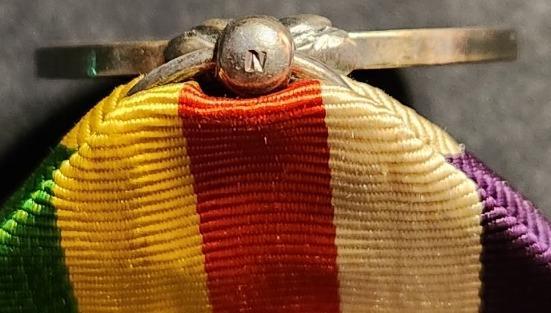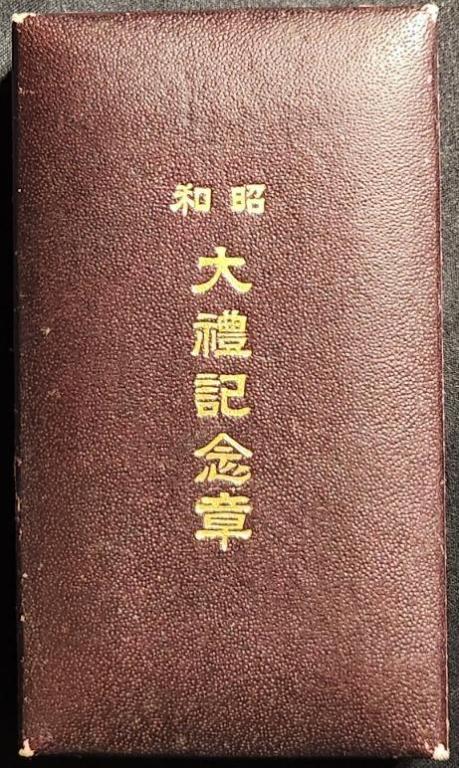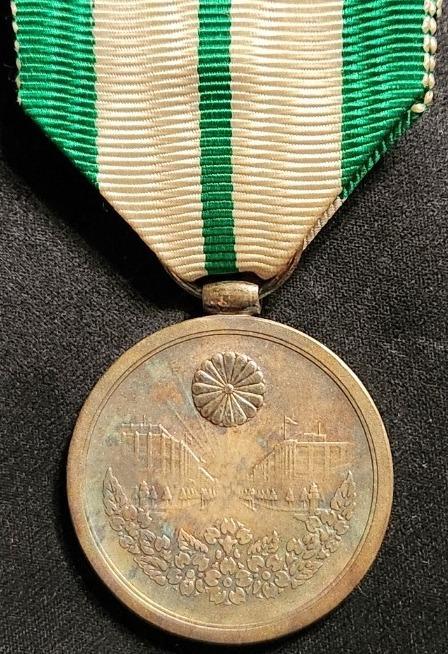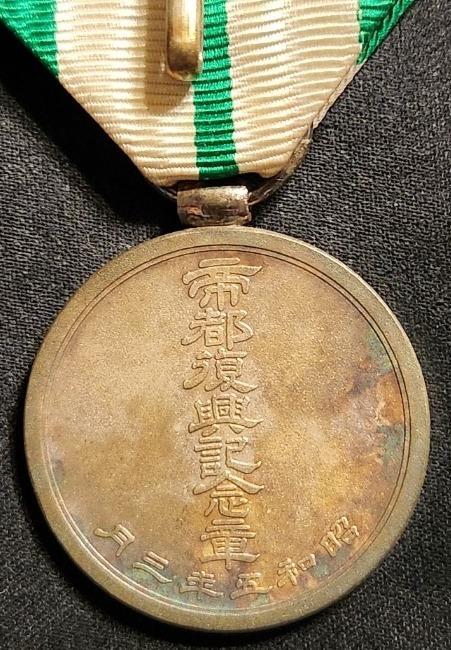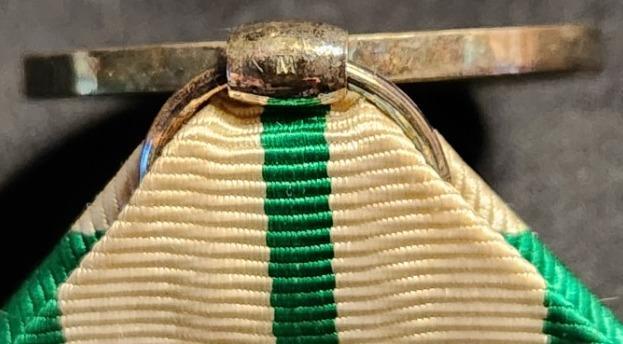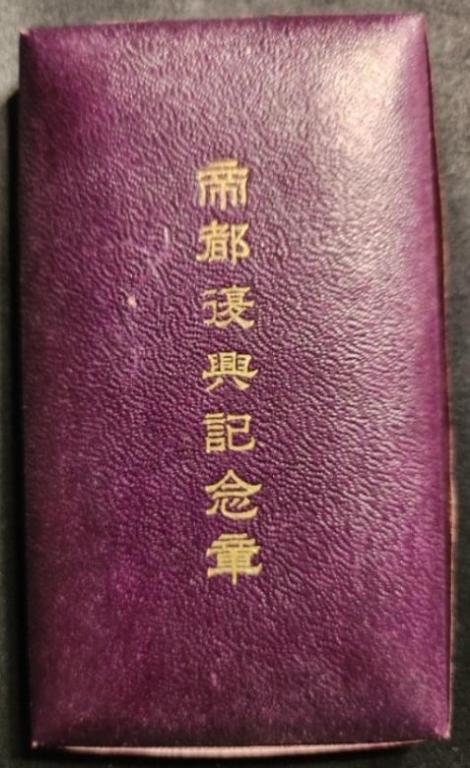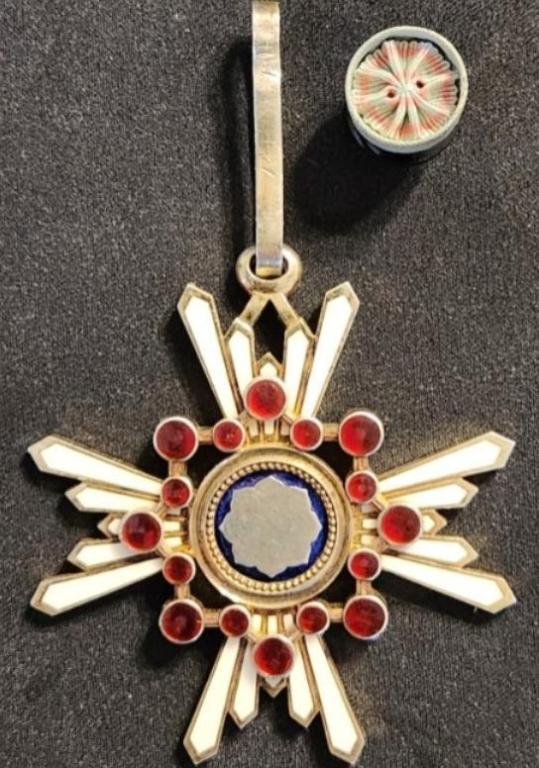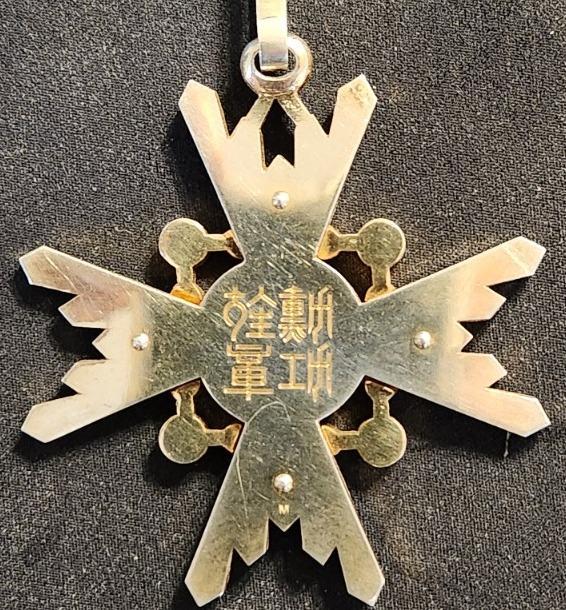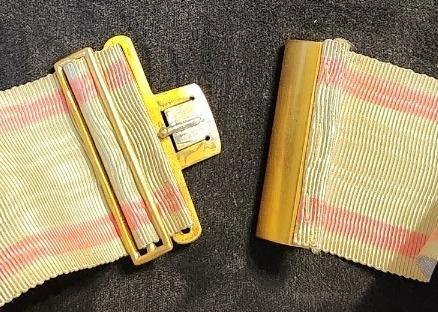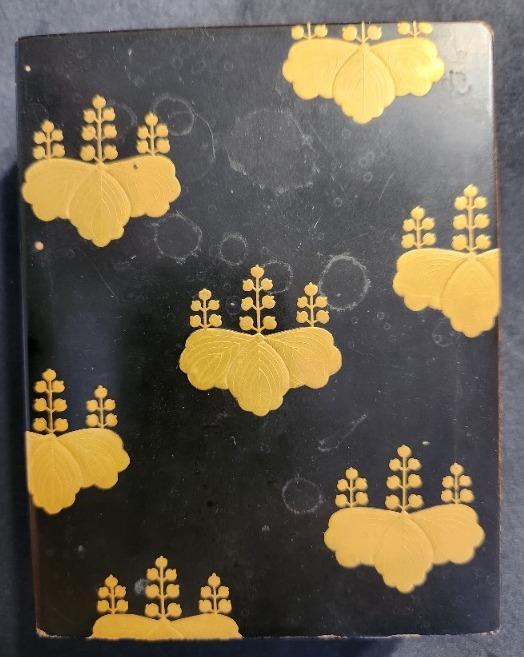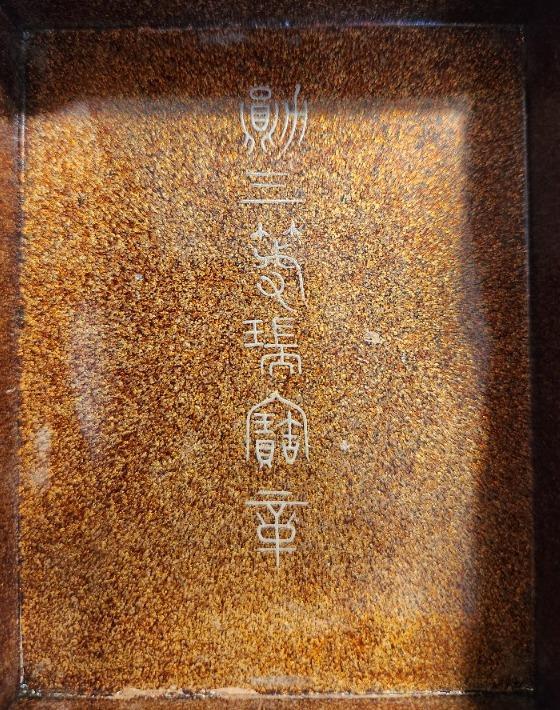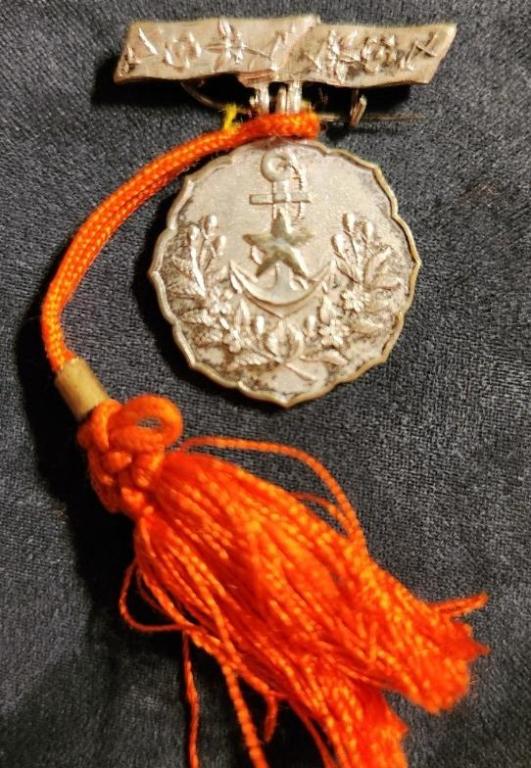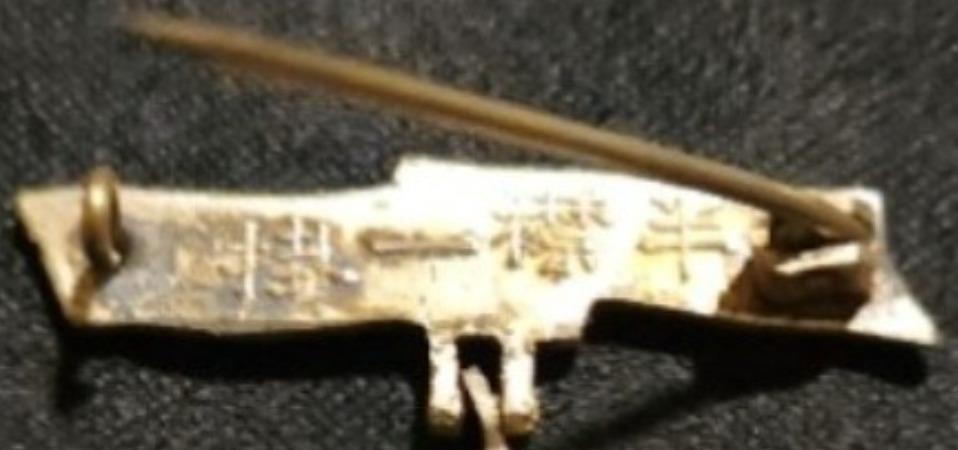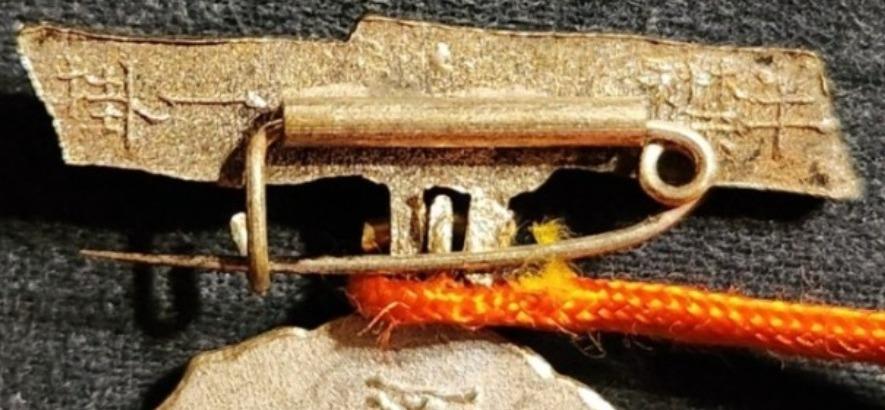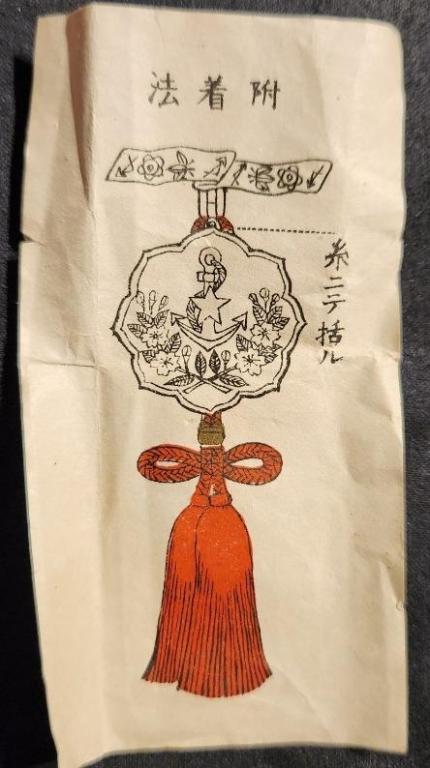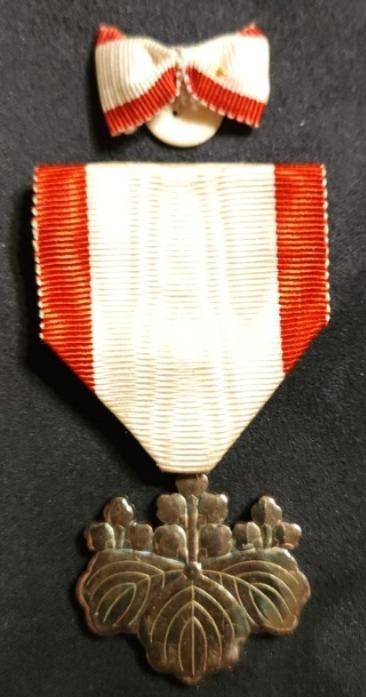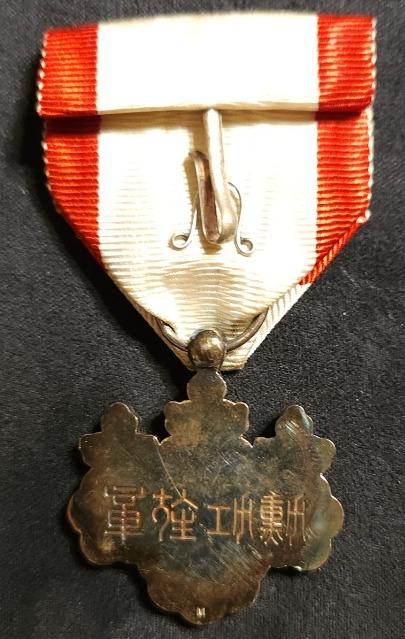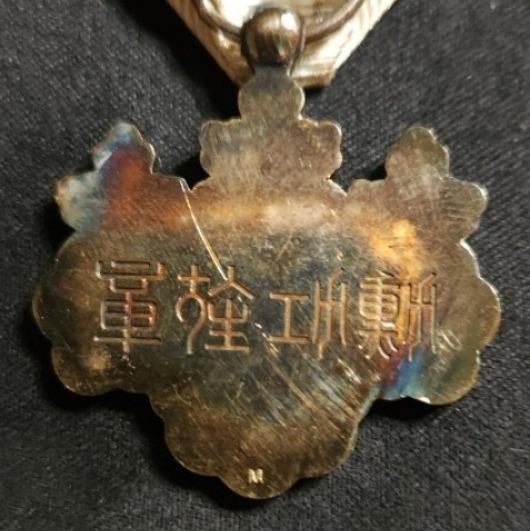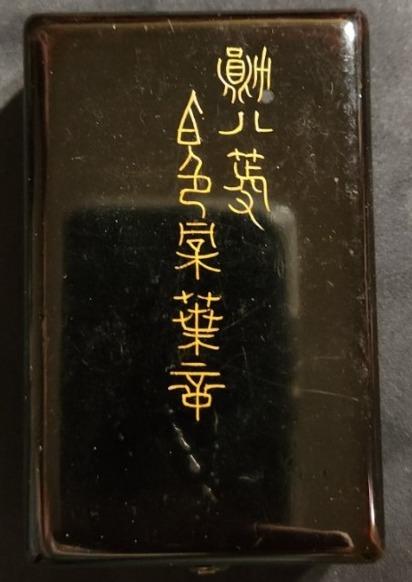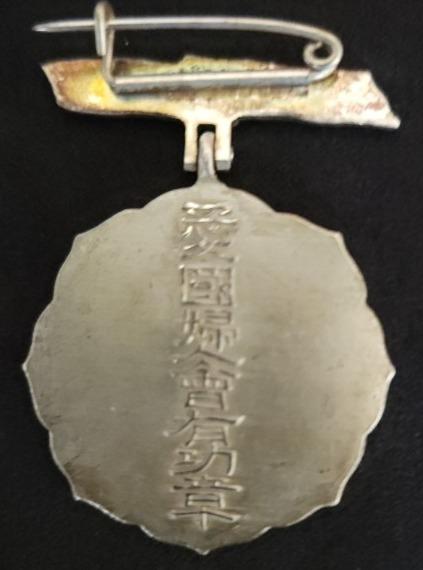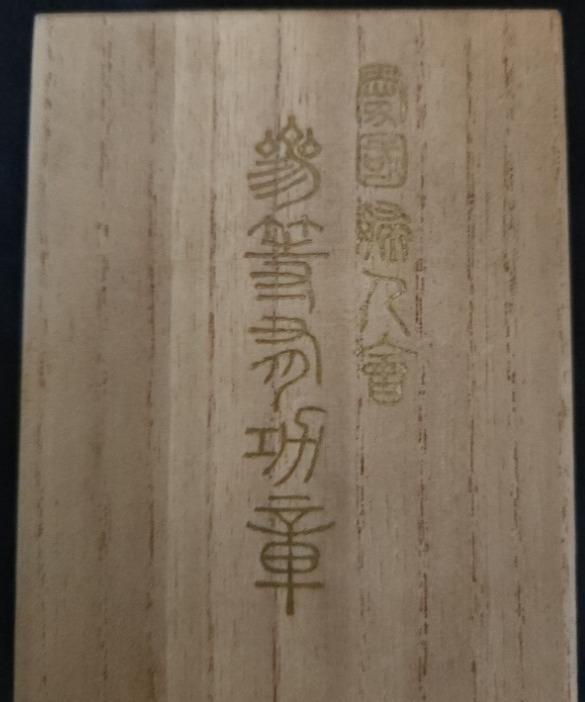-
Posts
468 -
Joined
-
Last visited
-
Days Won
20
Content Type
Profiles
Forums
Blogs
Gallery
Events
Store
Everything posted by TracA
-
I just picked-up this book, written before Coox's monumental work. Not a historical, grand overview. Apparently a detailed focus on the IJA's 2nd Battalion, 28th Infantry Regiment, 7th Infantry Division.
-
Hello No One, That JOMSA cover article, was it written by you? Sincerely, Tracy
-
Below is my example of the Showa Enthronement Commemorative Medal. This one has a hallmark ‘N’ on the top of the suspension ball. I think that the medal is quite beautiful. Question: are there any known time coordinates for this ‘N’ mark? Any ideas which manufacturer it might represent? Thank you. Tracy Obverse, with 萬歳 for “Banzai” under the pavilion: Reverse with 大禮記念章 for Grand Enthronement Commemorative Medal inside the banner and on the bottom edge from about 4h to 8h reading 昭和三年十一月 for Showa 3rd Year 11th Month, i.e. November 1928: Mark ‘N’ on the suspension ball: Purple case, with the name of the medal on the lid in gold kanji:
-
Nick, Got it. Thanks much. Tracy
-
Hello Nick, Please excuse the ignorance of my question, as I know nothing about award documents, but why is it that in this (these) instance(s) the indications of Rising Sun orders and Sacred Treasure orders are indistinguishable? Just trying to pick-up a bit of knowledge. Thank you, as always. Tracy
-
Nick, As always, thank you for sharing your knowledge. All the best, Tracy
-
My next installment for this topic is The Imperial Capital Rehabilitation Commemorative Medal with ‘M’ mintmark. My example has a beautiful tarnish to it and the ribbon colors are vivid (a replacement ribbon?). The ‘M’ mark of the Japanese Mint, Osaka, is on the top of the suspension and it is oriented towards the reverse of the medal. Per Medals of Asia the earliest known ‘M’ mintmark is from August 1930, and that datestamp actually corresponds to one of these medals. So I would say that this medal is at least from August of 1930. Question: does anyone know when the Japanese Mint stopped minting The Imperial Capital Rehabilitation Commemorative Medal? Enjoy. Tracy Obverse: Reverse with the central column of 帝都復興記念章 for Imperial Capital Rehabilitation Commemorative Medal and on the bottom edge from 4hr to 8hr 昭和五年三月 for March of the 5th Showa Year, or March of 1930: ‘M’ mintmark on the suspension: Case lid, which has the name of the medal in gold kanji:
-
Greetings, I just took possession of a magnificent Order of the Sacred Treasure 3rd Class, in a case for foreigners including the purple tasseled cords, with four rivets on the reverse and the Osaka mint mark ‘M’ directly below the rivet at 6hr. The cravate is very pale blue with pink stripes; the rosette is the same colors. No hallmarks on the rosette. Instead of the oval type clasps that I have seen, this cravate has a small wedge-like piece with a locking ball that slides into the slot of a gold colored piece on the other side of the ribbon. With some research on this very forum and at the Medals of Asia website, and assuming that the rosette is original to this award, I think that this piece might date from the mid- to late-1930s. Any and all suggestions/corrections are welcome. Enjoy. Tracy Obverse with rosette: Reverse with ‘M’ mint mark: Cravate fastener: Case lid: Inside of the case lid:
-
Dear No One, Thank you very much for the correction and sharing your knowledge. Both are greatly appreciated. All the best, Tracy
-
I have another acquisition to add to this thread. It is another Ordinary/Regular Member Badge but this one has an attached cord and the instructional paper wrapper for affixing the cord. Two things to note: The cord appears orange in color and on p. 56 of In the Name of a Living God... by Murphy and Ackley they state that these badges are sometimes found with orange cords affixed to them. However, while I can find references to red, white, and purple cords (see https://asiamedals.info/threads/history-and-badges-of-greater-japan-womens-patriotic-association.23765/) I find no reference to orange cords. Is there an error in Murphy and Ackley regarding the color of the cord? Do my eyes deceive me regarding the color? The pin fastener on the reverse of the suspension bar is different from the other two Ordinary/Regular Member Badges that I own (one of which is posted above), and therefore so is the placement of the kanji on the reverse of the suspension bar. See below for the examples side-by-side (well, sort of). Finally, I’m am quite sure that the kanji on the top of the instructional paper wrapper, 紅組弦, means “red cord/string group”. The kanji on the right, however, has me a bit stumped. I believe it is 糸ニテ括ル. I think that it means something about the length that the cord knot should be from where the cord is wrapped around the link from the suspension bar and the planchette, but I am just not sure. Any and all translation assistance is appreciated. Thank you, as always. Tracy Obverse: Reverse: First type pin back (not a good photo) and then the pin back type with this badge: Instructional paper wrapper: 紅組弦 “red cord/string group” and 糸ニテ括ル meaning ??
-
Greetings Everyone, I have another addition to this thread. A few weeks ago I obtained a wonderful Order of the Rising Sun 8th class with a lapel bow and Meiji case with gold kanji. The best part about this piece? The prominent ‘M’ mint mark on the reverse at 6h, the mark of the Osaka Mint. Some preliminary research (see Medals of Asia https://asiamedals.info/threads/mark-m-on-japanese-orders-and-medals-who-and-when.14818/ and https://asiamedals.info/threads/silver-kanji-vs-gold-kanji-lettering-on-the-lids-of-the-japanese-order-cases.26112/#post-357009) and the assumption that the case was the case of issue leads me to date this medal from sometime between March 1930 to 1940. Any and all thoughts and corrections to that are welcome. Enjoy. Tracy Obverse with lapel bow: Reverse: ‘M’ mint mark up a little closer: Case lid:
-
No One, Thank you for the answer to my kanji question, and for posting the two varieties side-by-side. Always useful for comparison purposes. Ah yes, even others who have written about Nomonhan acknowledge their indebtedness to Mr. Coox. All the best, Tracy
-
Greetings No One, Beautiful example. This is one of my favorite medals. I love the ribbon color and the design. I like the color of the presentation box as well. I find the choice of a dove, the symbol of peace, to be quite optimistic. Question: do the four central kanji on the paper wrapper translate to “service badge”? The definitive history of this apparently little known battle with direct consequences for the course of WWII is probably Nomonhan: Japan Against Russia, 1939 by Alvin D. Coox. I have the single volume paperback edition. It is a massive tome. The text is printed in about 8 or 9 point font and the work is 1,132 pages including chapter endnotes, which are printed in about 4 point font. The work also includes a 57 page bibliography. About 20 or so years ago I tried to finish the book but only made it to p. 671. It was a very tough slog. Your example looks like the “fat dove” variety. You can see my example, which I believe to be the “thin dove” variety, on this thread: https://gmic.co.uk/topic/79450-is-there-a-standard-group-for-ww2/#comment-717257 All the best, Tracy
-
Eric, Thank you for the information. Tracy
-
Dear No One, Ohhh, thank you. I didn't know that translation tool existed. I would simply copy and paste sections into DeepL Translate. Thanks again. All the best, Tracy
-
No One, Thank you again. These articles will be interesting to read but will take me quite some time to get through as my French is pretty much non-existent. 😃 All the best, Tracy
-
Thank you for posting the link. Tracy
-
Hello No One, It certainly is a beautiful tree. I assume that the wood is also used for the lacquered cases in which we find Orders, Decorations, some Badges, etc. Is my assumption correct? Tracy
-
Thank you Nick! Tracy
-
No One, Thank you for the update above, and for the missing portion of the PDF. All the best, Tracy
-
Greetings, I recently acquired this lovely Patriotic Women’s Association Third Class Merit Badge. I’m quite confident of the reading/translation of the kanji on the reverse of the badge and on the right column of the case lid, but I’m not so sure of the reading/translation of the center column of kanji on the case lid. Any and all corrections would be most welcome. All the best, Tracy Obverse: Reverse inscription is, I believe, 愛国婦人會有功章, Aikoku Fujinkai Yūkō bajji (Women’s Patriotic Association Merit Badge): Case lid with what I believe to be the following inscription: The right column is 愛国婦人會 for Aikoku Fujinkai (Women’s Patriotic Association) and the center column is 参等有功章 for san tōkyū no eiyo yūkō bajji (Third class merit badge; third grade of the third rank of honor merit badge). Corrections or suggestions?
-
Hi Chris, Forgive me. If I mentioned finding the article, then I should have posted a link for all to see. Here it is: http://www.omsa.org/files/jomsa_arch/Splits/2001/300176_JOMSA_Vol52_2_28.pdf Thanks. All the best, Tracy
-
No One, You can disregard my request. I found the JOMSA article as a PDF. Thank you. Tracy
-
Hello No One, I was a member of OMSA in 2001 (and allowed my membership to lapse a few years later) but have lost all of my copies of JOMSA. A quick Internet search does not bring up the article. Would it be possible to post the JOSMSA article or send it to me via PM? Thank you for your consideration. All the best, Tracy
-
Thank you Nick for sharing your expertise. All the best, Tracy

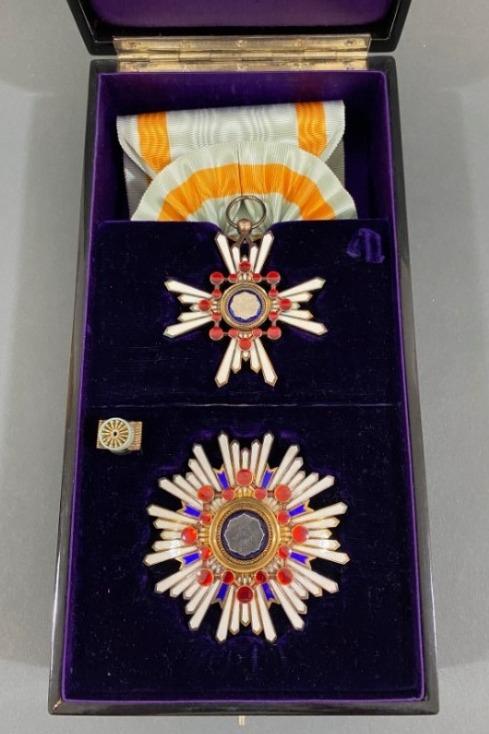
(1).thumb.jpg.38cff8cd9c5d55311a4208b0a83448ba.jpg)
